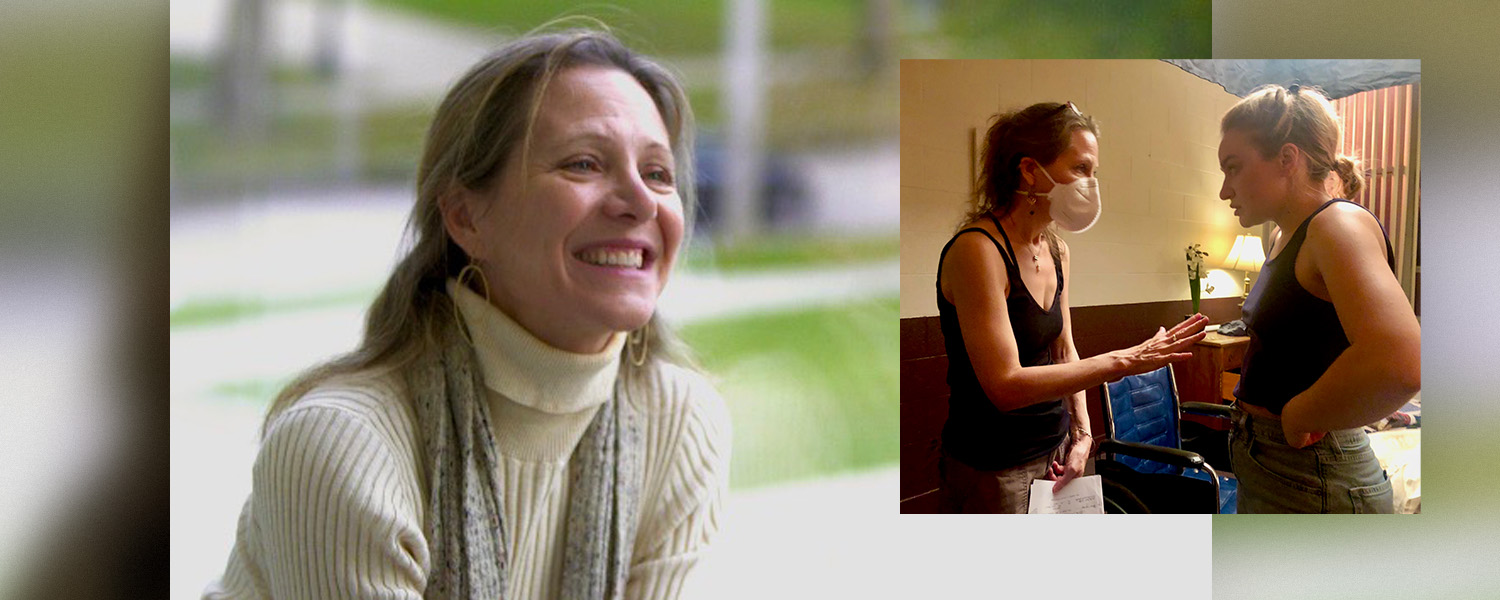In America, conversations about grief and loss are often avoided, and in art, tend to be sugarcoated, or even “corny.”
Kent State Assistant Professor and independent filmmaker Dana White is changing that narrative through her work, and was recently recognized by the Ohio Arts Council.
“We don’t address these really uncomfortably topics,” White said. “It’s OK to not be OK. It’s OK that life leaves us with a lot of bruises. It’s not about erasing them. It’s about trying to live with them, about trying to cope. … I don’t think American society is comfortable with that.”
White, who teaches in the School of Media and Journalism's (MDJ) digital media production program, recently received one of six Ohio Arts Council Individual Excellence Awards for Media Arts and $5,000. Individual Excellence Award funding recommendations are made through an anonymous, open panel review process focused the basis merit of artists’ past work. This year, more than 600 applications were received from artists across the state. Seven disciplines were awarded, including Media Arts.
“It feels really wonderful to be recognized in this community,” White said. “It makes me really appreciative of the support I’ve gotten (at Kent State University) for my work, and the agenda I’ve been trying to promote — work that deals with loss, grief and trauma.”
White submitted her two most recent works: “In the Orchard,” a feature film about loss and PTSD that earned Best Feature Film at the 2018 Sonoma International Film Festival, and “Turning Blue,” a short film about a daughter caring for her dying mother, that premiered at the Cleveland International Film Fest in 2021. White was the writer, co-director (alongside her husband, Kent State Lecturer Christopher Knoblock, who also teaches in MDJ) and an actress for both of the films.
“Turning Blue” is based on White’s own story of losing her mother just days after she moved from Los Angeles to start her job at Kent State University in 2018. She was particularly touched that one of the jurors praised the very intentional use of the camera in this piece.
The 14-minute short film was shot in a continuous take, White explained, and “the camera work is meant to facilitate the idea that death is controlling.” The camera takes over as death takes over, mimicking the way White recalls losing control as her mother — and best friend — drew closer to death.
“It was really important in terms of the way we shot the film, to have the camera be a character,” White said.
In Kent State’s School of Media and Journalism, White teaches Scriptwriting for Video and Film and Story for Picture, among other classes. Her passion for tackling difficult subjects extends into the classroom through the way she empowers students to tell stories they are passionate about, but sometimes afraid of.
“I know it’s hard to tell personal stories,” she says. “I always write into things I’m really afraid of. … In terms of my students, I encourage them to take the difficult road.”
White, who spent 20 years in Los Angeles before coming to Kent State to teach, says Ohio is home to a vibrant community of artists.
“It’s an exciting place to be making things. I’m grateful to the people at Kent State who have helped me and who have given me opportunities,” she said. The Ohio Arts Council Individual Excellence Award is a great honor. I’m moved by their recognition of my work.”

